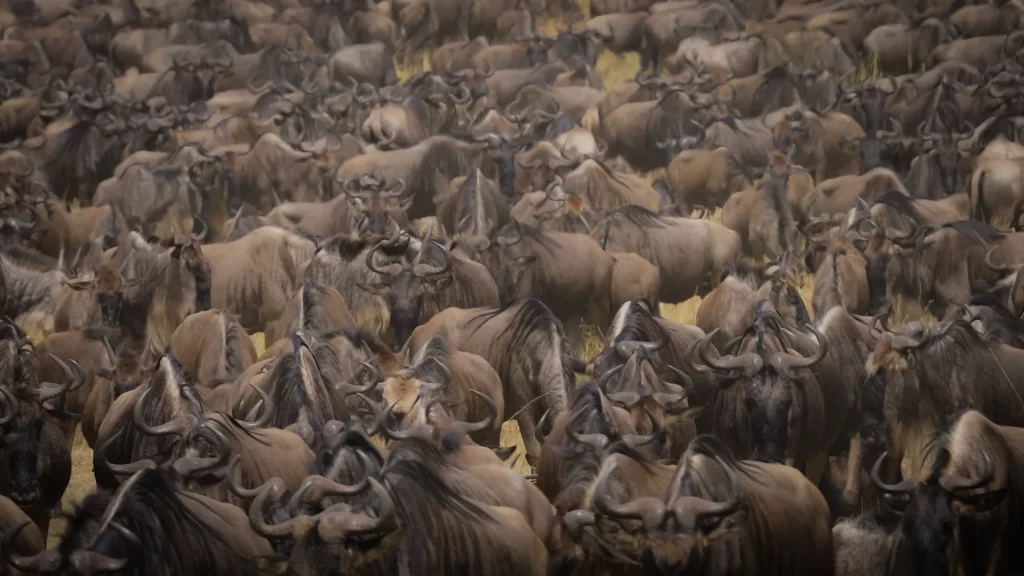Serengeti Migration
Outline
Serengeti Migration
The Serengeti Migration, often called “The Greatest Show on Earth,” is a breathtaking wildlife spectacle that attracts nature enthusiasts and photographers worldwide. This annual migration of over 1.5 million wildebeest, 200,000 zebras, and countless other animals is a testament to the wonders of nature.
The Great Migration
The Great Migration involves a massive movement of animals through the Serengeti in Tanzania and the Maasai Mara in Kenya. This continuous journey follows a clockwise route driven by rainfall and grazing availability.

Annual Cycle
The migration follows an annual cycle, beginning in the southern Serengeti plains in January and moving northwards through the year. The cycle is influenced by the rains, ensuring the animals always have access to fresh grazing.
Birthing Season
From January to March, the southern Serengeti becomes a nursery as thousands of wildebeest calves are born each day. This period is crucial for the survival of the species, as the newborns must quickly gain strength for the long journey ahead.
River Crossings
One of the most dramatic events of the migration is the river crossings at the Mara and Grumeti Rivers. Here, the animals face perilous challenges, including predators like crocodiles lying in wait.
Predator Activity
The migration attracts numerous predators, including lions, hyenas, and leopards. These predators follow the herds, creating an intense and dynamic ecosystem that offers incredible wildlife viewing opportunities.
Best Time to Visit
Different parts of the migration can be witnessed throughout the year. For calving season, visit from January to March, while the dramatic river crossings are best seen from July to October.
Ecosystem
The Serengeti ecosystem, one of the oldest on Earth, supports a diverse range of habitats and wildlife. This rich biodiversity makes it a UNESCO World Heritage Site and a must-visit for any wildlife enthusiast.
Conservation Efforts
Ongoing conservation efforts aim to preserve this unique ecosystem and the migration. Organizations work tirelessly to protect the wildlife and habitats, ensuring the migration continues for future generations.
Conclusion
The Serengeti Migration is a natural wonder that offers a glimpse into the circle of life in one of the world’s most iconic ecosystems. Witnessing this migration is a profound experience that connects us to the raw beauty and power of nature.
Popular Topics
- The Kilimanjaro packing list
- The best things to do after climbing Kilimanjaro
- Tips for climbing and summiting Mt Kilimanjaro


